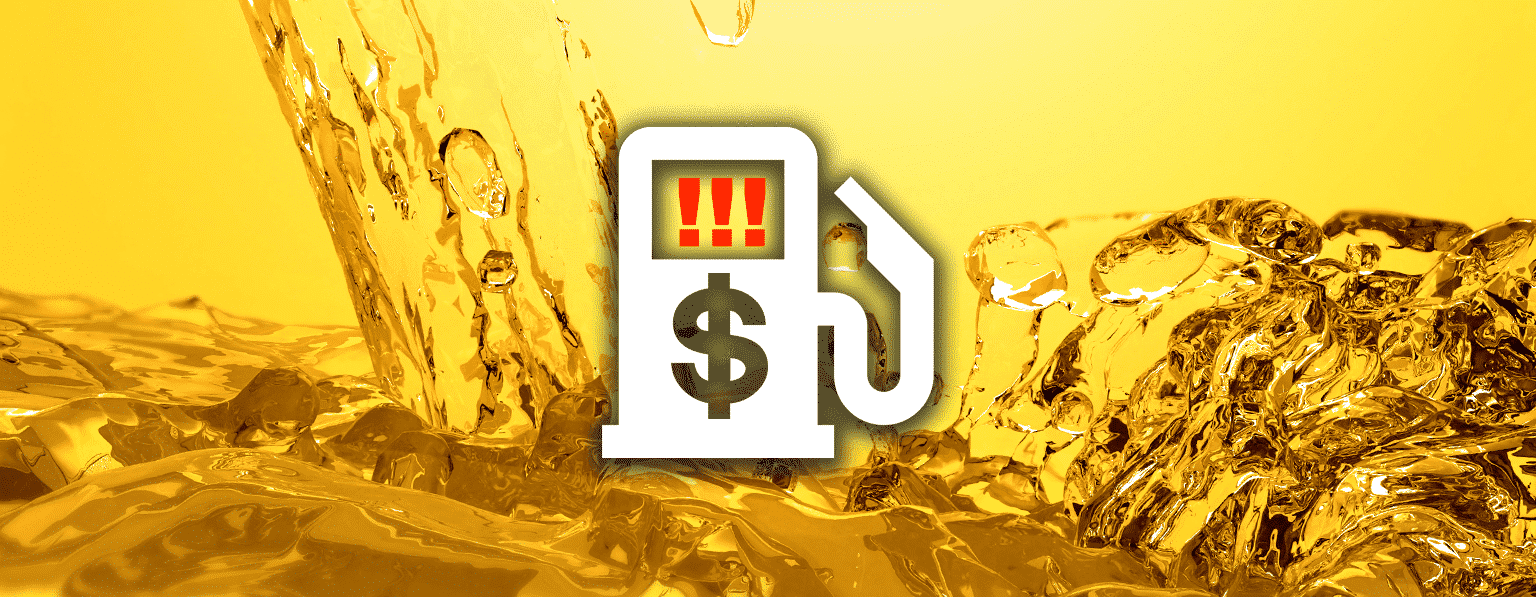Last Updated on April 4, 2024
Did you know that you can improve gas mileage of your vehicle by up to 15% just by making a few simple changes? Best of all, these tips you can start doing today. Let’s get into this.
Start by removing unnecessary items from the vehicle. This could be anything such as workout gear, cargo box, or a bike rack. Next, ensure your tires are properly inflated. Tires are the key to not only your car’s safety but also fuel efficiency. The air conditioner burns up gas fast, so use it wisely. Keep the windows down while on city streets, then resort to air conditioning when you hit the highway. Check the air filter too, if it’s dirty it can impact gas mileage by as much 10%!
By following these simple steps, you should be able to improve your gas mileage by at least 15%. For instance, if you spend $4.50 per gallon, average 25-mpg, and drive 13,500 miles per year, you’d save $364 a month. That’s an incredible amount of money for just following a few simple tips. However with gas prices rising practically by the day, can we save even more? You bet we can, there are things you can do to increase your gas mileage up to 30% if not more. Read on to start saving at the pump!
Improve Your Gas Mileage by Keeping up on Regulator Maintenance
One of the best ways to keep your gas mileage up is by staying on top of routine maintenance. Coil packs, spark plugs, fuel filters, motor oil–all these things need replacement in a modern automobile. As an example, the National Institute for Automotive Service Excellence(ASE) reported that bad spark plugs can decrease fuel economy by as much as 30%. That’s a cost of about 94 cents per gallon at today’s prices!
The effects of dirty oil on a car’s performance and fuel efficiency are not insignificant either. Missing an oil change and running dirty oil will also cause your vehicle to burn more gas. Dirty oil makes the engine work harder, and thus a harder working engine means burning more gas per mile.
Keeping up on regular maintenance will ensure you’re getting the best gas mileage from your vehicle. Be sure to replace the air filter, coil packs, spark plugs, motor oil as recommended by the manufacturer to maintain optimal fuel economy.
Increase in Mileage: as much as 15%
Replace Your Cabin Air Filter
A dirty cabin air filter will cause your AC to run longer and harder in the summer. This leads to an overworked AC system requiring the vehicles engine to burn more fuel. Don’t let a simple cabin filter cause you pain at the gas pump. Cabin air filters are affordable and easy to replace, so you’ll save money by doing it yourself. They are usually located in the air ducts behind the glove box, just be sure to note the direction of the airflow arrows so you install the new filter in the proper direction.
Don’t want or have time to replace the cabin air filter yourself? No problem, most dealerships can easily replace this for you. Expect to pay between $63 and $82 for a new cabin air filter replacement.
Increase in Mileage: as much as 2%
Plan Your Route
By planning a route ahead of time, you can avoid stop and go driving that wastes fuel. Because this type of driving causes drivers to brake and accelerate sharply, causing the engine to work harder. When the engine is working harder, it burns gas at a faster rate than steady driving. In fact, the U.S. Department of Energy reports that stop and go traffic can lower your gas mileage by as much as 10% to 40%.
To save on gas and get the most miles from your tank, follow these simple tips: plan a route that eliminates as many traffic lights possible; and drive during time periods traffic is light. Keep in mind the best route will often change depending on the time of day. Planning a route will not only maximize fuel efficiency, but maybe even reduce a little stress in your life too!
If you need a little help planning the most fuel-efficient route possible, then there’s no better way than using an app like Google Maps or Waze. These apps calculate the shortest routes for your trip by taking traffic into account.
Increase in Mileage: as much as 5%
Maintain Consistent Speeds
Maintaining a steady speed will make your engine more efficient and save you money on gas. Even the smallest variation in speed can result in an increase of gas consumption by as much as 10-20%. To conserve fuel when driving on the highway or long open roads, use your car’s cruise control. It’s an excellent way to avoid those little speed-up/slow down events that happen when you’re tired or distracted. Thanks to its ability to maintain a continuous speed, cruise control can save an average of 7-14% on gas.
If you find yourself stuck in stop-and go traffic, try to take about five seconds to accelerate your vehicle from a standstill. The key here is to go easy on the gas pedal. For manual transmissions drivers, use a moderate throttle and shift between 2000 and 2500 rpm.
Increase in Mileage: as much as 20%
Have Your Alignment Checked
Wheels are one of the most important parts to a car’s handling and fuel efficiency. I’m sure you’ve heard that proper wheel alignment can make your vehicle more responsive, but did you know it also has impacts on how much gas your vehicle burns? It sure can, by up to 10% according to one study.
Misalignment is a major factor in decreasing gas mileage as it makes your engine have to work harder to get your vehicle to move. A proper alignment keeps the wheels working in perfect harmony, reducing drag and helping you save money at the gas pump. For a full wheel alignment, expect to pay somewhere between $100 and $200. Not only will an alignment save you money at the gas pump, but you will also save your tires from unnecessary tread wear too.
Increase in Mileage: as much as 10%
Fill Your Tank Early in the Morning or Late at Night
Here’s one of my favorite tricks to saving money at the pump. Fill your tank when it is coolest outside–early in the morning or late at night. Fuel is dispensed by volume, and colder gasoline is more dense than warmer gasoline. This results in cold gas containing more energy by the gallon than warm gas. The result–more fuel for the same amount of money! Doesn’t get much easier than that.
Adding Up The Gas Savings
Now I bet you are wondering how much in total you can save by following all these tips? Using the same calculation as above, but this time using 30%–you could potentially save up to $729 a year. Cha-ching!
Final Thoughts: How To Improve Gas Mileage
Although you cannot do much about the price of gas, there are a few things you can do to improve how many miles on 1 gallon of gasoline you can travel. You may be surprised at how small changes can add up over time. Give these tips a try and let us know how much you save.and see how much money you can save on your next tank of gas. Did we miss anything? If so, please comment below.

Managing Editor
Christopher is an automotive technical writer. When he’s not at the local autocross event, he can often be found working on one of his cars. Specializes in automotive class action law, industry trends, and automotive maintenance. Email me direct, or learn more about us

